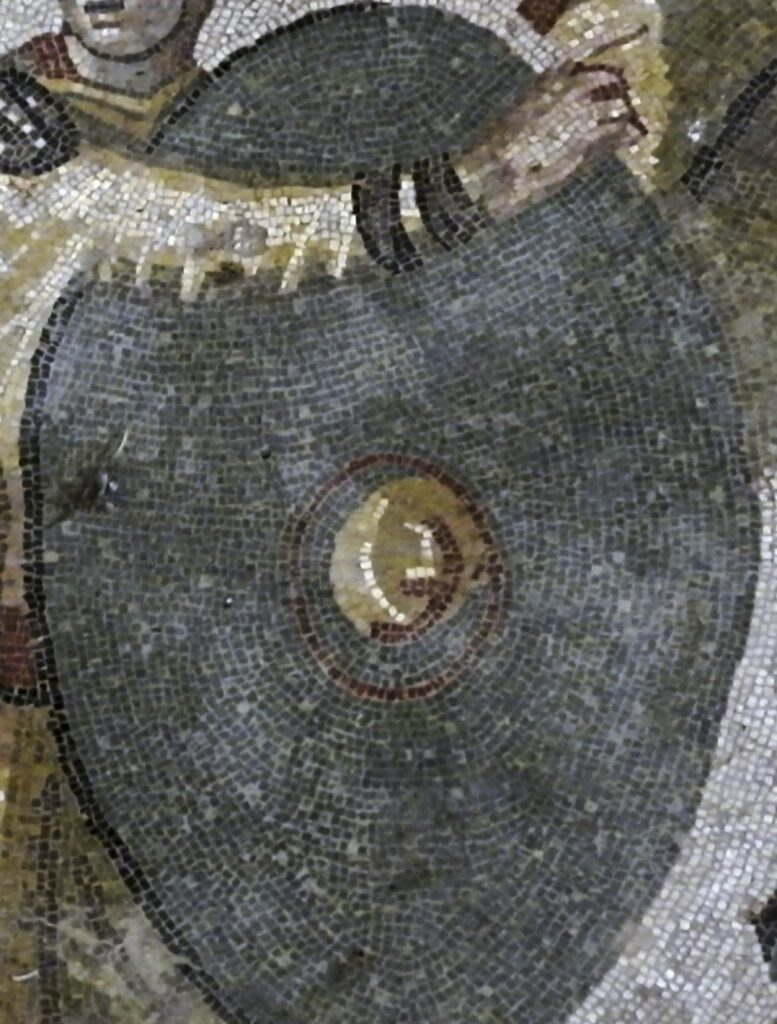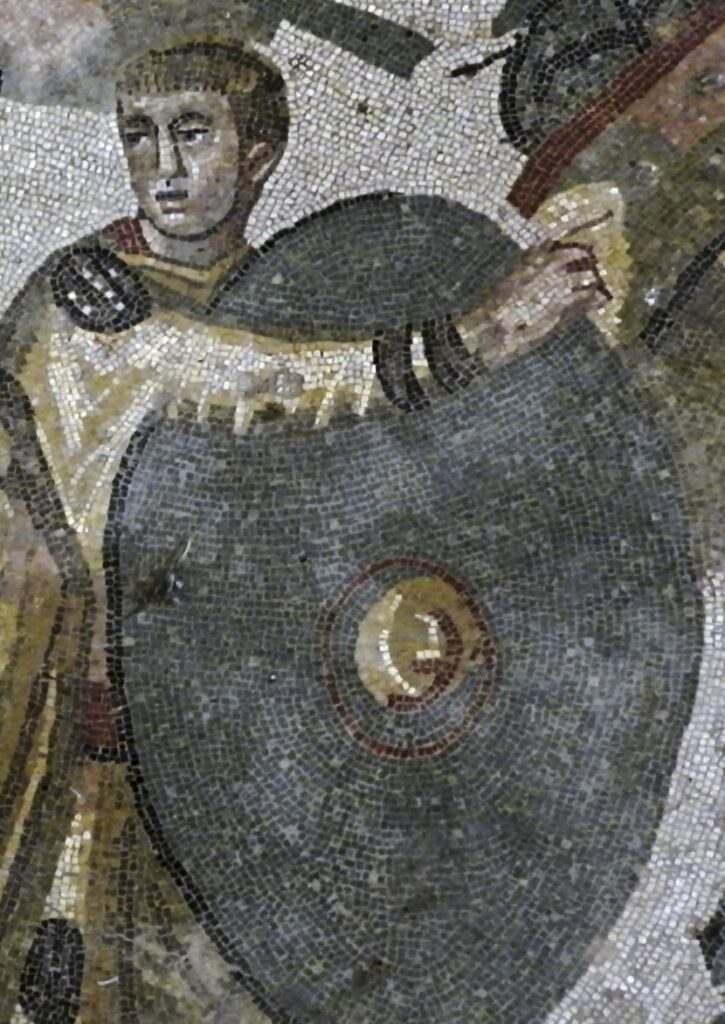The mosaic ornament in the “corridor of the great hunt” is a great representation of the techniques used to capture and transport exotic and ferocious animals 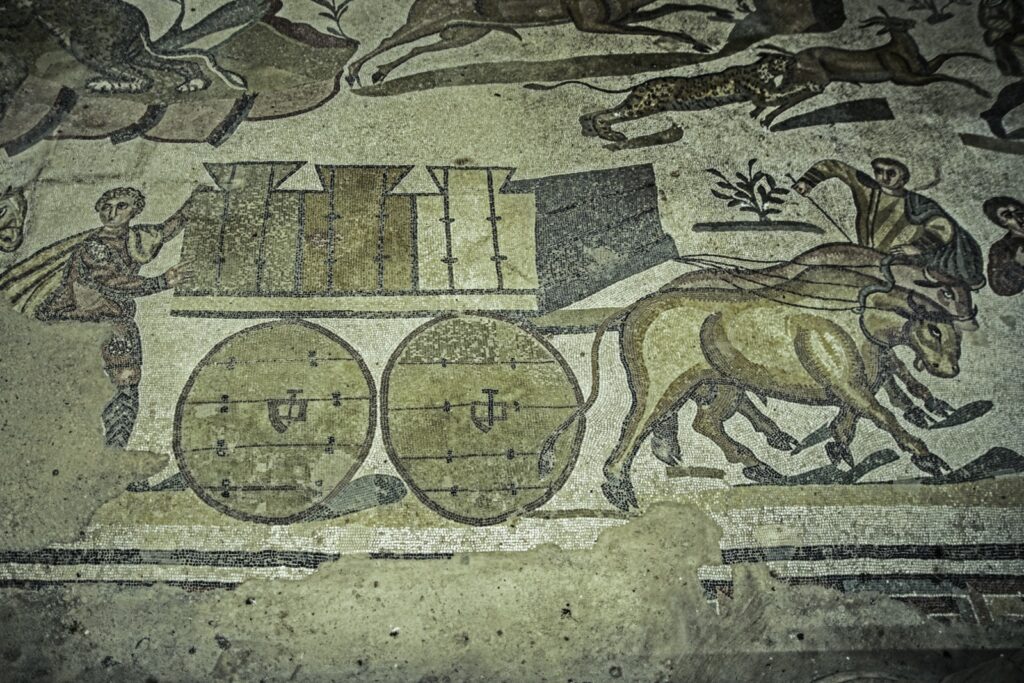 to the
imperial estates
to the
imperial estates
. It gives us the most extensive example depicted in antiquity.
Among the soldier-hunters who prevail in the eastern part of the mosaic, servants in charge of the transportation and imperial officials who direct and supervise the capture operations, in the sixth scene a group of three figures stands out from the pattern of the narrative.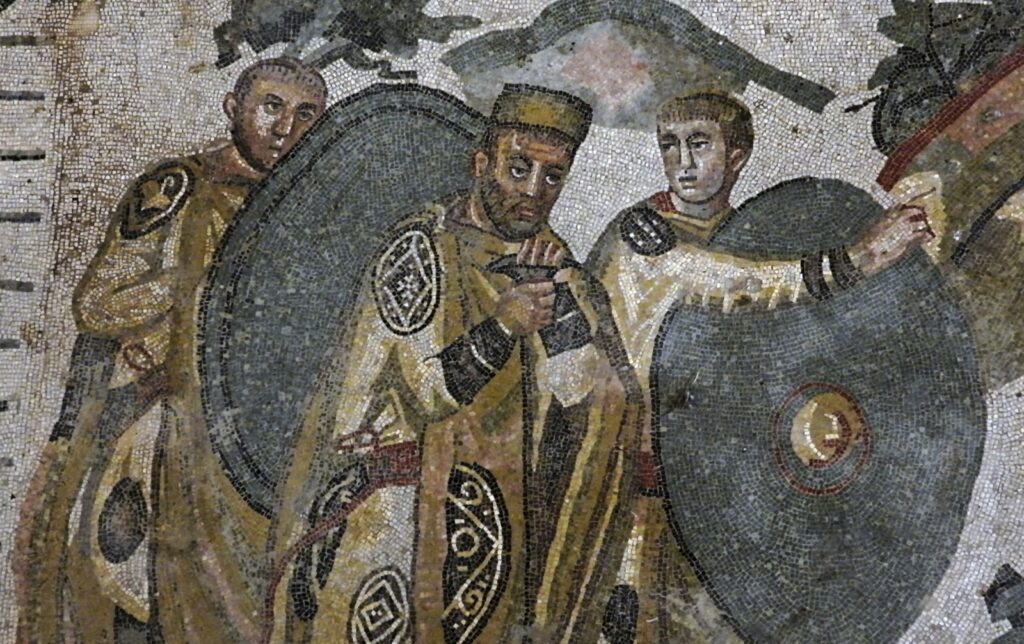
Among them emerges the central one representing a man with a round hat, the
pileus pannonicus
(Pannonian cap), a cloak with a large orbiculus that covers a light tunic with sleeves bordered at the wrists and a cingulum, the bright red military belt tightened at the waist, decorated with plates according to rank.
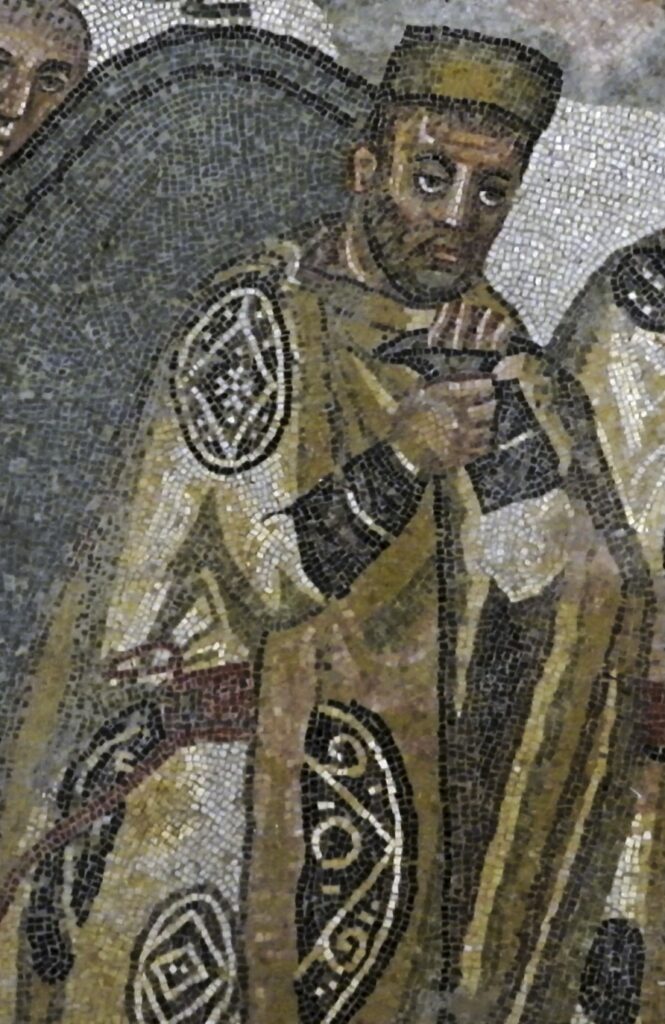 This figure is shown with a mature face with a deep gaze, leaning on a tall mushroom walking stick.
This figure is shown with a mature face with a deep gaze, leaning on a tall mushroom walking stick.
Each of these elements leads us to think that he is a high-ranking military man flanked by personal guards, the protectores, equipped with large shields.
